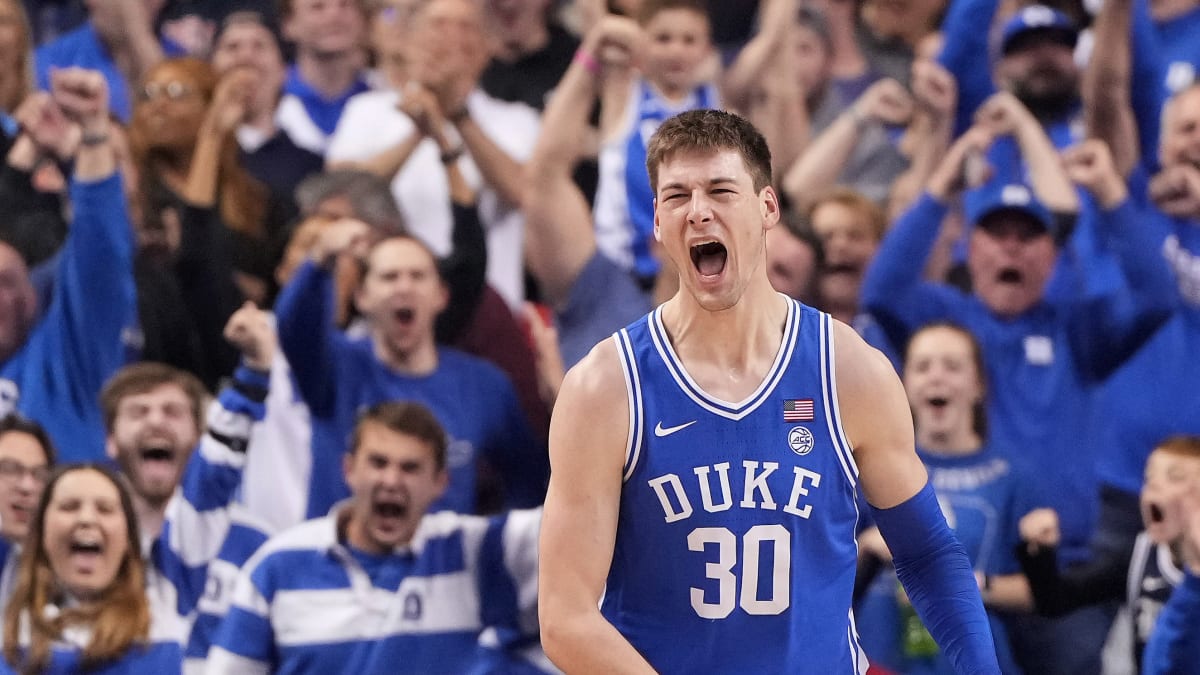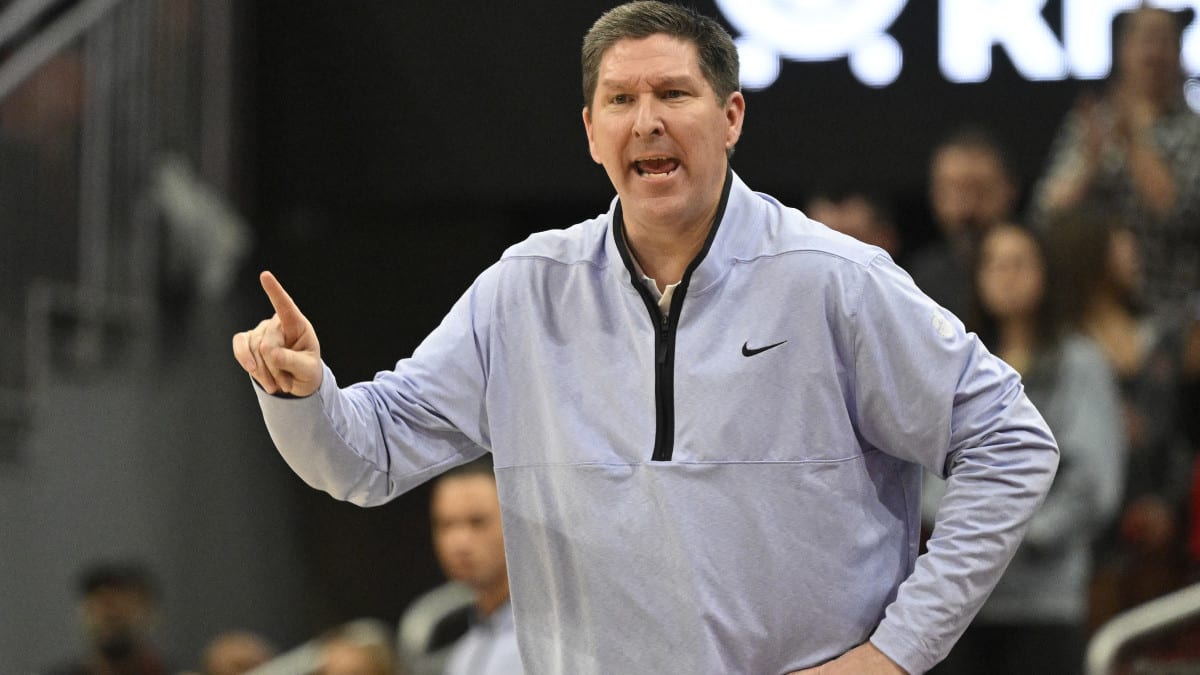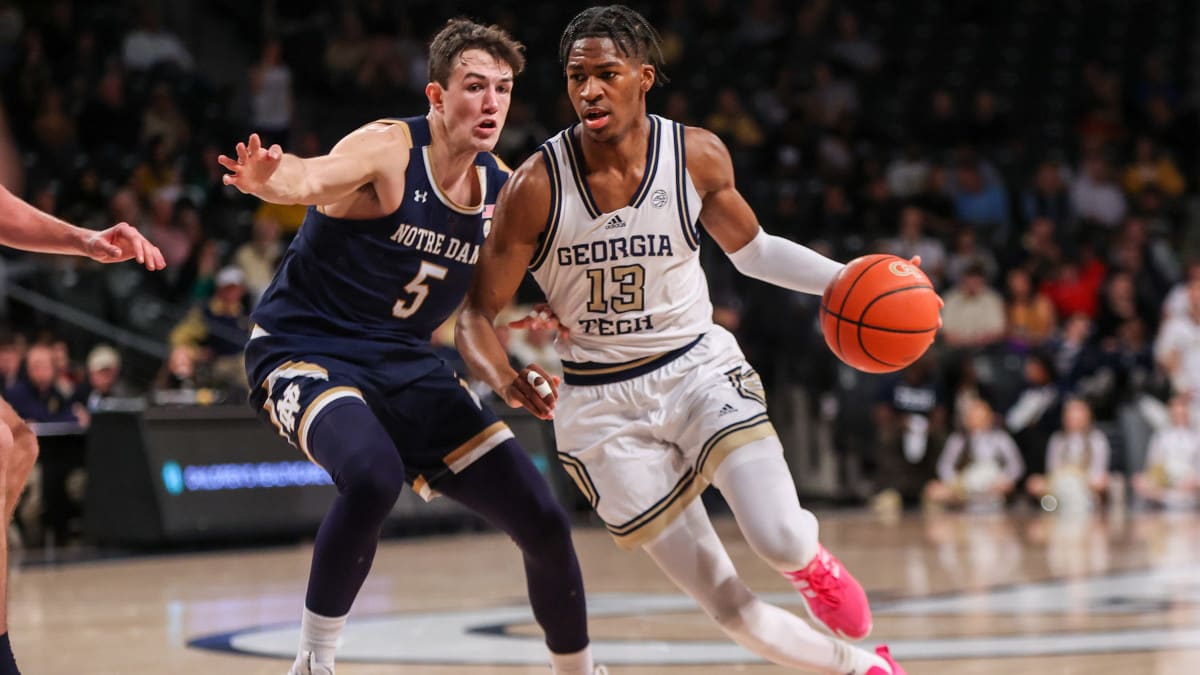As part of its 2023–24 men’s basketball preseason coverage, Sports Illustrated is rolling out previews for each of the six high-major conferences. First up is the ACC.
The ACC stumbled to seventh in KenPom’s conference rankings last season, the lowest the league has been in the history of the site, which dates back to 1997. After substantial coaching turnover at some of the conference’s top programs in recent years, a step back may have been inevitable. Still, this feels like a critical year for the ACC as a whole to bounce back and prove that recent struggles are more of an aberration than a growing trend.
SI’s picks for …
Player of the Year: Kyle Filipowski, Duke
Newcomer of the Year: Elliot Cadeau, North Carolina
Dark-Horse Team: Syracuse
First-Team All-Conference:
- Judah Mintz, Syracuse
- Tyrese Proctor, Duke
- PJ Hall, Clemson
- Kyle Filipowski, Duke
- Armando Bacot, North Carolina
SI’s predicted order of finish:
1. Duke
- PG Jeremy Roach
- SG Jared McCain
- SF Tyrese Proctor
- PF Mark Mitchell
- C Kyle Filipowski
The Blue Devils bring back four starters and a fifth key rotation player in center Ryan Young—rare continuity for a program that has consistently lost one-and-done talent in recent years. It gives Jon Scheyer a chance to seriously contend for a national title in his second year at the helm of the program. A healthier, more explosive Filipowski is a scary sight for the ACC after he averaged 15 points and nine rebounds per game as a freshman, and fellow sophomore Proctor also seems destined for a huge season.

Bob Donnan/USA TODAY Sports
2. Miami
- PG Bensley Joseph
- SG Nijel Pack
- SF Wooga Poplar
- PF Matthew Cleveland
- C Norchad Omier
After a trip to the Final Four in 2023, Jim Larrañaga’s program appears to be in great shape even with some key departures. It won’t be easy replicating what Isaiah Wong and Jordan Miller brought to the table, but three starters return from the Final Four squad. Larrañaga hasn’t been shy in hyping up Poplar as the team’s next great scoring guard, and he’ll pair nicely with Pack to provide the firepower we’re used to seeing from Miami backcourts. Plus, the Canes made an intriguing portal addition at the PF spot in Cleveland, once considered a potential one-and-done who was a bright spot on a bad Florida State team a season ago.
3. North Carolina
- PG Elliot Cadeau
- SG RJ Davis
- SF Cormac Ryan
- PF Harrison Ingram
- C Armando Bacot
There may not be a more interesting team in 2023–24 than the Heels, who have reshaped their roster around veteran stars Davis and Bacot to bounce back from missing the NCAA tournament a season ago. Davis slides off the ball to make room for elite passing freshman Cadeau, who has huge expectations attached to him despite the shaky history of reclassified point guards. Lower-usage wings Ryan and Ingram should fit much better than last year’s role players, and the Bacot-Davis duo is still among the best in the sport. It’s a prove-it year for Hubert Davis, and the Heels have the pieces to overachieve.
4. Virginia
- PG Reece Beekman
- SG Isaac McKneely
- SF Andrew Rohde
- PF Ryan Dunn
- C Jordan Minor
This era of constant player movement may not be Virginia coach Tony Bennett’s comfort zone, but he has built a talented team with considerable upside. The sophomore wing trio of McKneely, Rohde (St. Thomas transfer) and Dunn could be the Cavs’ next Final Four core if it stays together for multiple years, and the stability of Beekman’s return to run the show is a big deal for stacking wins in 2023–24.
5. Clemson
- PG Chase Hunter
- SG Joe Girard
- SF Jack Clark
- PF Ian Schieffelin
- C PJ Hall
Brad Brownell enters the year on the hot seat. Heard that one before? Us, too. Brownell has escaped the heat before, but there’s a good chance he needs to go dancing this year to stick around. This group gives him the chance to do that. Big man Hall is a major matchup issue thanks to his inside-out skill set, and Clemson as a whole should be an excellent three-point-shooting team. Defense could be a concern though, and the Tigers can ill afford the early bad losses that plagued them last year.

Jamie Rhodes/USA TODAY Sports
6. Syracuse
- PG Judah Mintz
- SG JJ Starling
- SF Chris Bell
- PF Benny Williams
- C Naheem McLeod
Adrian Autry may be a Syracuse lifer, but he seems intent on modernizing the Orange program in a way Jim Boeheim didn’t. Chief among the changes: Expect some man-to-man defense from Syracuse this year. That said, the 2–3 vs. man debate won’t determine this group’s ceiling. The primary reason for excitement is in the backcourt, where sophomore Mintz could be among the nation’s best scorers and Notre Dame transfer Starling should make an immediate impact.
7. Virginia Tech
- PG Sean Pedulla
- SG Hunter Cattoor
- SF Rodney Rice
- PF Robbie Beran
- C Lynn Kidd
Plagued by close losses last year, the Hokies were better than their 8–12 ACC record indicated. And while incorporating a new-look frontcourt could be a challenge, veteran guards Pedulla and Cattoor are a strong place to start for Mike Young’s team. The rim-protecting duo up front of Northwestern transfer Beran and third-year returner Kidd could be a boon defensively for a Hokies unit that struggled on that end a season ago
8. NC State
- PG DJ Horne
- SG Casey Morsell
- SF MJ Rice
- PF Ernest Ross
- C DJ Burns
Kevin Keatts’s team went dancing last year on the back of two gunslinging guards: Terquavion Smith and Jarkel Joiner. Keatts has clearly recruited a similar archetype to replace Smith and Joiner with the likes of Horne (Arizona State), Rice (Kansas) and Taylor (Butler), but replicating what last year’s duo did won’t be easy. The good news: Surrounding those newcomers are a trio of key returners, headlined by sharpshooter Morsell and talented post player Burns. Don’t be surprised if the Wolf Pack are sweating on the bubble come March.
9. Wake Forest
- PG Hunter Sallis
- SG Cameron Hildreth
- SF Damari Monsanto
- PF Andrew Carr
- C Efton Reid (needs NCAA waiver)
Steve Forbes has built his Wake Forest program on plucking elite guards from the transfer portal. His latest project: former five-star guard Sallis, who spent the first two years of his college career at Gonzaga. This seems like a perfect marriage, and, if he breaks through under Forbes, this could be the Demon Deacons’ chance to get back to the NCAA tournament. A waiver for fellow Gonzaga transfer Reid would be huge.
10. Georgia Tech
- PG Amaree Abram
- SG Miles Kelly
- WG Dallan “Deebo” Coleman
- SF Kowacie Reeves
- PF Tyzhaun Claude
The Yellow Jackets are an intriguing ACC dark horse in Year 1 under former Celtics assistant Damon Stoudamire. He did admirable work at the college level at Pacific in the WCC and brings in enough talent to have a competitive first team at Georgia Tech in what would have been a rebuilding year. Leading scorer Kelly returns, and a pair of SEC rotation players in Abram (Ole Miss) and Reeves (Florida) have major upside.

Brett Davis/USA TODAY Sports
11. Boston College
- PG Jaeden Zackery
- SG Claudell Harris Jr.
- SF Prince Aligbe
- PF Devin McGlockton
- C Quinten Post
This group was surprisingly feisty down the stretch last year, and the return of key cogs like PG Zackery and C Post gives reasons for real optimism in Year 3 under Earl Grant. Post is a weapon given his skill level as a center, and the Eagles were a different team with him healthy a year ago. The talent level probably isn’t high enough for an NCAA tournament push, but playing in the postseason seems attainable, and at BC that’s a big win.
12. Pittsburgh
- PG Jaland Lowe
- SG Ishmael Leggett
- SF Zack Austin
- PF Blake Hinson
- C Fede Federiko
This would be a big step back after the Panthers made the NCAA tournament a season ago, but point guard concerns loom. Freshmen Lowe and Carlton Carrington are the two options to run the show, and whoever wins the job has quite the challenge as the primary ballhandler. The good news: The pieces around the PG spot are strong, with returning star Hinson back at power forward and a pair of plug-and-play transfers on the wing.
13. Florida State
- PG Primo Spears (needs NCAA waiver)
- SG Darin Green
- SF Jamir Watkins
- SF Cam'ron Fletcher
- PF Cameron Corhen
The Seminoles have produced consecutive down years after an outstanding run under Leonard Hamilton. Is this the year for a bounceback? I’m not sold. Getting healthy after an injury-plagued 2022–23 should help, but there are still so many unproven pieces to work in. FSU will be on waiver watch for point guard Spears, who’d likely be in line to start if cleared. The x-factor is in the frontcourt, though, where intriguing Spanish big Baba Miller could make a leap after a disjointed freshman campaign.
14. Louisville
- PG Skyy Clark
- SG Mike James
- SF Tre White
- PF JJ Traynor
- C Dennis Evans
The talent level at Louisville has been upgraded after last season’s disaster of epic proportions, but the questions about Kenny Payne’s ability to lead this program remain unanswered. Louisville still has the same problem it had a season ago: a lack of playmakers and shooters to create a functional offense. Payne is betting big on former elite recruit Clark to bounce back after a rough freshman year at Illinois and will also need a big year from USC transfer White, especially after highly touted freshman Trentyn Flowers departed late for a pro contract in Australia.
15. Notre Dame
- PG Markus Burton
- SG Braeden Shrewsberry
- SF Julian Roper
- PF Carey Booth
- C Kebba Njie
Micah Shrewsberry’s Penn State tenure gives us every reason to be optimistic about the long-term future at Notre Dame, but Year 1 could be ROUGH. Shrewsberry inherits very little: The team’s three returning players averaged fewer than three points per game combined last year, and its top portal addition was a bench player for Northwestern in 2022–23. This year is all about getting young talent like freshmen Burton and Booth acclimated and hoping they turn into long-term building blocks.







